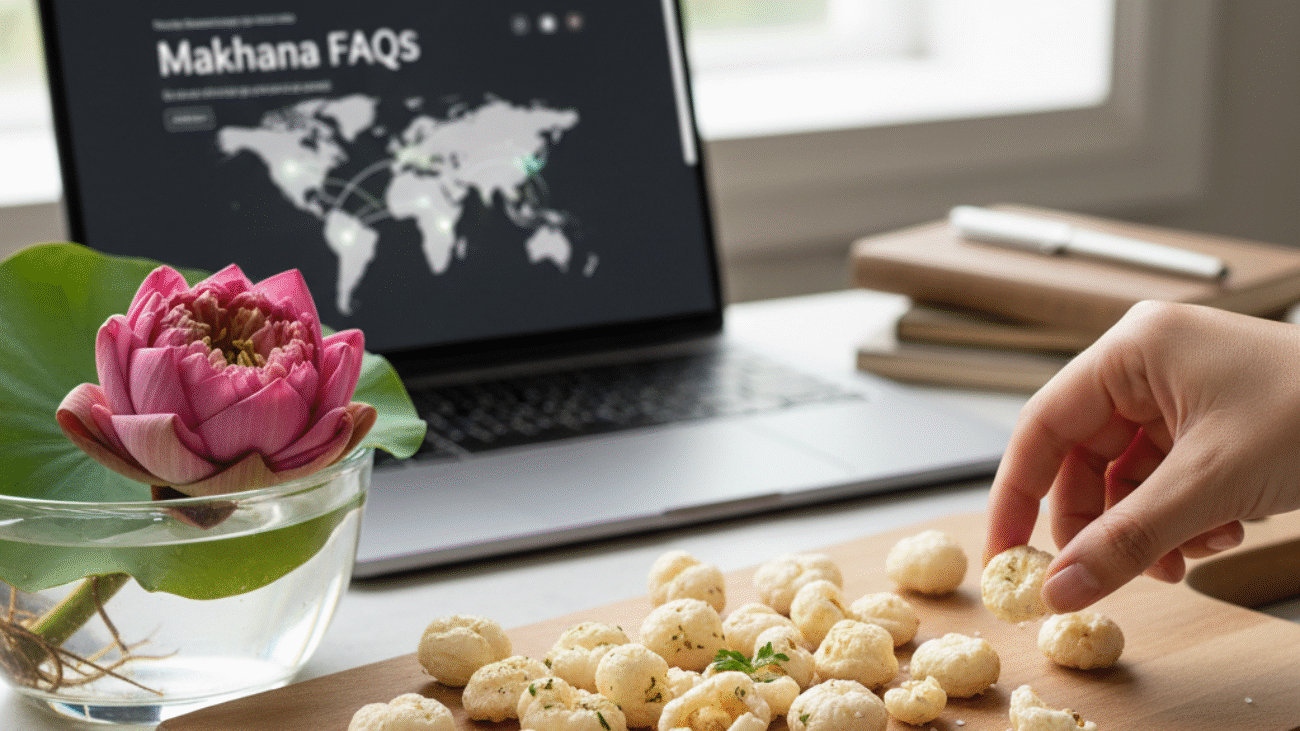In recent years, Makhana, or fox nuts, has moved from a traditional Indian snack to a global superfood sensation. As its popularity soars, so do the questions about this unique aquatic crop. At Trivexa Global Exim, we believe in transparency and empowering our customers with knowledge. Inspired by common queries, we’re diving deep into the fascinating world of Makhana to answer your most pressing questions!
What Exactly is Makhana? Is it a Nut?
Despite being commonly called “fox nuts,” Makhana is actually the edible seed of the Euryale ferox plant, a type of water lily that primarily grows in the stagnant waters of wetlands. It’s not a nut botanically, which is great news for those with nut allergies! These seeds are harvested, dried, and then roasted at high temperatures, causing them to pop into the familiar puffed, lightweight spheres we love.
Where Does Makhana Come From?
Makhana cultivation is deeply rooted in the Eastern parts of India, particularly in the state of Bihar, which accounts for a significant portion of the world’s production. Other regions, including parts of West Bengal and Assam, also contribute to its cultivation. The traditional methods of harvesting are labor-intensive, requiring skilled farmers to collect the seeds from the bottom of ponds.
What Makes Makhana a “Superfood”?
Makhana’s superfood status comes from its impressive nutritional profile:
- Rich in Nutrients: It’s packed with essential minerals like calcium, magnesium, potassium, and phosphorus.
- Low in Calories & Fat: An ideal snack for weight management.
- High in Fiber: Aids digestion and promotes satiety.
- Gluten-Free: Perfect for those with gluten sensitivities or celiac disease.
- Antioxidant Powerhouse: Contains flavonoids, which help fight free radicals and reduce inflammation.
- Low Glycemic Index: Beneficial for managing blood sugar levels, making it suitable for diabetics.
How Can I Incorporate Makhana into My Diet?
The versatility of Makhana is one of its greatest appeals!
- Snack It: The most popular way! Enjoy them roasted and lightly seasoned with salt, pepper, or your favorite spices. At Trivexa Global Exim, we offer high-quality Makhana perfect for this.
- In Curries & Sabzis: Add them to gravies and vegetable dishes for a unique texture and added nutrition.
- Desserts: Incorporate them into kheer (pudding) or other sweet treats.
- Salad Topping: Replace croutons with crunchy Makhana for a healthier alternative.
- Cereal/Porridge: A nutritious addition to your breakfast bowl.
Is Makhana Suitable for Everyone?
Generally, yes! Makhana is a highly digestible and hypoallergenic food, making it safe for most people, including children and the elderly. Its low sodium and sugar content also make it suitable for individuals with hypertension and diabetes. However, as with any food, moderation is key, and if you have specific dietary concerns or medical conditions, it’s always best to consult with a healthcare professional.
Why is Trivexa Global Exim Focused on Makhana?
As a company “Trivexa Global Exim” is committed to bringing the finest natural products to the world. We specialize in the export of high-quality Makhana because we believe in its incredible health benefits, its potential to support sustainable farming communities, and its growing global demand as the ultimate healthy snack. We ensure that our Makhana meets stringent quality standards, delivering natural goodness right to your doorstep.
Have more questions about Makhana? Feel free to reach out to us!




